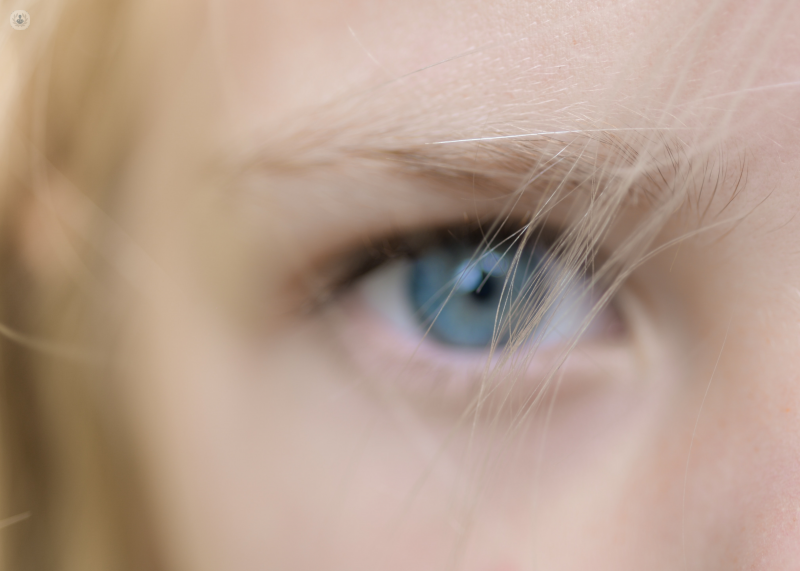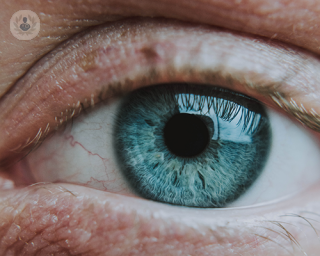Fuchs' dystrophy
Mr Radwan Almousa - Ophthalmology
Created on: 04-21-2017
Updated on: 03-20-2023
Edited by: Aoife Maguire
What is Fuchs' dystrophy?
Fuchs' dystrophy is characterised by a reduction in the number of cells that form the inner layer of the cornea, called endothelial cells. Its function is to maintain a correct transparency in the cornea and to process the water that forms the structure of the cornea. Therefore, when these are reduced, the water is not processed properly and, as liquid accumulates, the corneal tissue thickens and causes it to lose its transparency.
Fuchs' dystrophy usually develops in two stages:
- First stage: Dystrophy may produce no symptoms, or only mild symptoms. Cornea guttata is the initial alteration of Fuchs' dystrophy.
- Second stage: Once the disease has progressed, patients may experience pain and sensitivity to light, and the scars gradually form in the centre of the cornea.

Prognosis
Fuchs' dystrophy gets worse over time. If a corneal transplant is not done, a person with severe Fuchs' dystrophy may become blind or suffer severe pain and very low vision.
Symptoms of Fuchs' dystrophy
The typical symptoms are:
- Eye pain
- Sensitivity to light and glare
- Blurred or cloudy vision, initially only in the morning
- Seeing coloured halos around lights
Other problems may occur, such as scarring of the cornea.
Medical tests for Fuchs' dystrophy:
Fuchs' dystrophy can be diagnosed during a slit-lamp examination. But it can also be diagnosed using:
- Corneal pachymetry : measures the thickness of the cornea
- Specular microscopic examination : looking at the thin layer of cells covering the back of the cornea
- Visual acuity test
What causes Fuchs' dystrophy?
The causes of Fuchs' dystrophy may be:
- Hereditary : Can be passed down through families. However, the condition may also occur in people with no known family history of the disease.
- Gender : It is more common in women than in men.
- Age : Vision problems do not appear before the age of 50 in most cases. However, a health care specialist may be able to see signs of the disease in people between the ages of 30 and 40. This is why annual eye checks are important in maintaining overall eye health.
Can Fuchs' dystrophy be prevented?
So far, no form of prevention is known. Corneal transplantation can be delayed by avoiding cataract surgery or by taking special care during cataract surgery.
Treatments for Fuchs' dystrophy
Replacement the back of the cornea, which is the endothelium layer, through DMEK surgery provides the best visual outcome and the least risk of rejection, as only a very thin layer is being transplanted. The surgery could be done under local anethesia in most of the cases.
Which specialist treats Fuchs' dystrophy?
Ophthalmologists are responsible for preventing, diagnosing and treating diseases that affect the patient's eyes and visual capacity, such as Fuchs' dystrophy.





